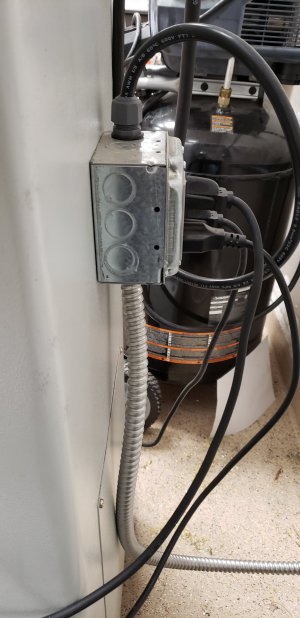In theory, theory and practice are the same. In practice, this is not always the case. As any one working with electricity has found, often to their chagrin.
http://www.hudsontelcom.com/uploads/ShopElex.pdf Fires tend to leave the spouse a little angry. . . On checking the link, it shows "file not found". I will follow up and repost. . .
When splitting the 240 volts into two 120 volt lines, a shared neutral is
theoretically acceptable. The neutral must have the capacity to carry the maximum load on
one of the 120 volt circuits. Any excess would be carried as two loads in series from a 240 volt feed, actually reducing the single 120 volt load on the neutral.
All of this is grand
theory, what actually matters is what the local electrical codes permit. Any deviation from their "normal" way of doing things would, at the very least, put your homeowners insurance at risk. Times are starting to get hard and they will look for any excuse to avoid paying out. Even if the damage has no relation to the machines. Losing your roof to a storm would still be related to the electrical system in the eyes of an insurance adjustor. Wiring "convenience" outlets from the same breaker as a 240 volt load would be theoretically doable, But it is not the "norm".
I would advise that "convenience" outlets be electrically separate from the machine load for this reason alone. Multiple circuits back to the panel can, and often are, be legally placed in the same conduit. "Piggy-back" breakers are available if the circuit count availability is too low. All it costs is a little more copper, and a little more effort on the part of the installer. And a couple of piggy-backs. Of course, we all know, advice is an opinion, just like an a$$hole, which everyone has and most of them smell pretty bad. Check on what local codes allow, that's where the "rubber meets the road".
EDIT: It seems that GoDaddy has dropped my web structure. I no longer have a copy of the text files so I guess anyone looking is out of luck.
.


